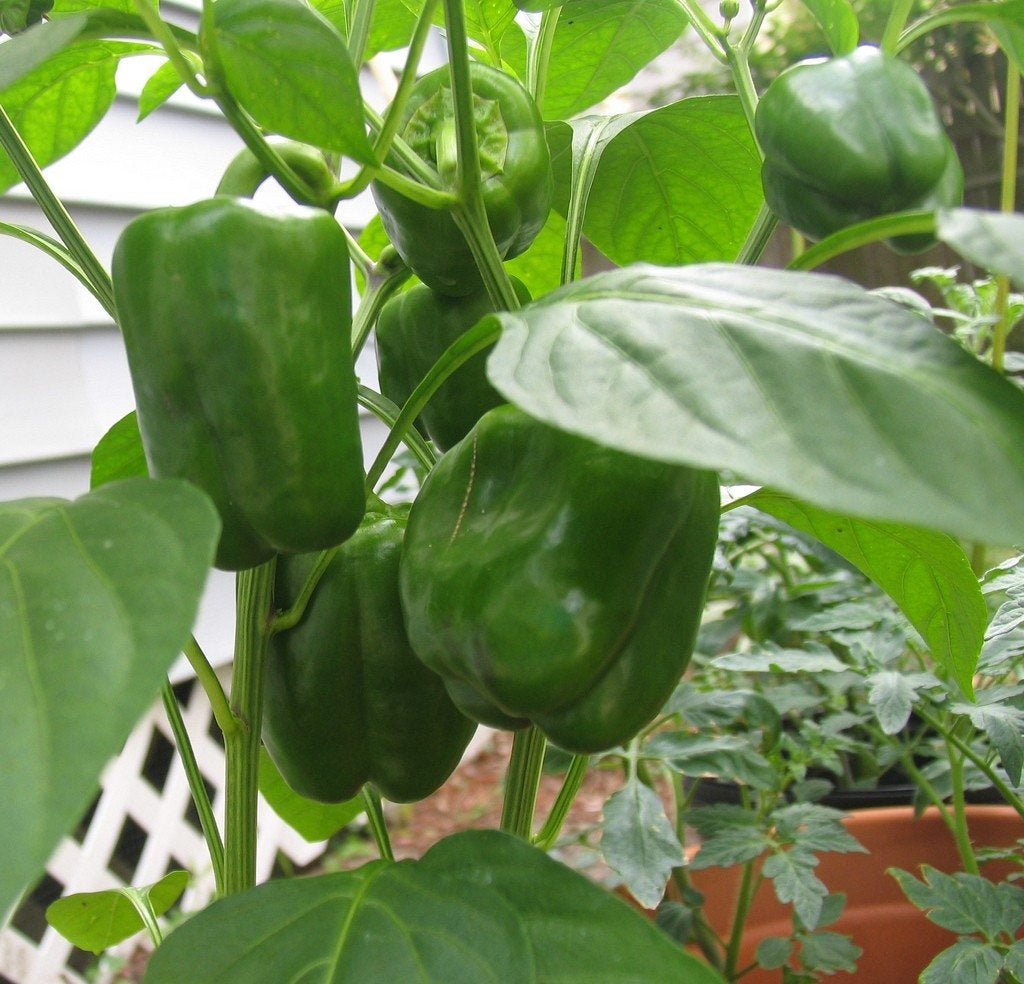How To Stake Pepper Plants


Although pepper plants are usually considered to be fairly sturdy plants, they have been known to break on occasion from the weight of developing fruit. Pepper plants have shallow root systems. When they are laden with heavy fruit, the branches will sometimes bend and break. For this reason, many people turn to pepper staking or other means of support. Let's find out more about how to stake pepper plants.
How to Stake Pepper Plants
Staking pepper plants may not be a requirement for growing them in your garden, but it has its advantages. Not only does pepper staking help support plants, keeping them upright, but pepper staking can also reduce sunscald on fruits and helps keep them off the ground, where they are susceptible to pests or rotting. The best way to stake peppers is to drive a wooden or metal stake next to the plant or every 3 to 4 feet (0.9 to 1.2 m.) per row. Then, simply tie the main stem and branches of the plant loosely to the stake using torn sheets or pantyhose. Continue to add ties as needed while the plants are actively growing. Even if you're growing peppers in a container, you can still support pepper plants with stakes. For staking pepper plants in pots, drive the stake into the soil of the pot, or for more stability, place it in the ground next to the pot and tie it off.
Using Cages to Support Pepper Plants
Some people prefer to support pepper plants with cages rather than staking pepper plants. For this you can use wire tomato cages -- store bought or homemade. Homemade pepper cages are constructed much the same as those used for growing and supporting tomato plants. For more information on building these supports, check out the following article: Tips for Building Tomato Cages.
Gardening tips, videos, info and more delivered right to your inbox!
Sign up for the Gardening Know How newsletter today and receive a free copy of our e-book "How to Grow Delicious Tomatoes".

Nikki Tilley has been gardening for nearly three decades. The former Senior Editor and Archivist of Gardening Know How, Nikki has also authored six gardening books.
-
 Looking For Plants To Give You The Soft And Fuzzies? Try These 5 Fuzzy Leaf Plant Options
Looking For Plants To Give You The Soft And Fuzzies? Try These 5 Fuzzy Leaf Plant OptionsLovers of texture, drama, silver foliage and tactile plants will adore these special sensory garden additions. These fuzzy leaf plant options will leave you all aglow
By Susan Albert
-
 Get Ready For A Summer Of Hummers! Grow These Full Sun Hummingbird Plants and Flowers
Get Ready For A Summer Of Hummers! Grow These Full Sun Hummingbird Plants and FlowersIf you’re lucky enough to enjoy a sunny backyard, make sure you are maxing out on your pollinator opportunities and grow these full sun hummingbird plants and flowers
By Tonya Barnett